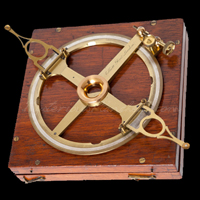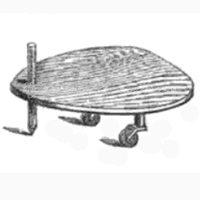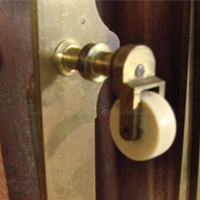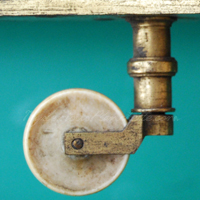As the planchette craze was set to hit the shores of Great Britain with the publication of the "Once a Week" article in late 1867, production of the talking tables was only a cottage industry, standing in stark contrast to fast-approaching days when major British toy firms would all capitalize on the fad. Previous to the article, our evidence suggests that only the esoteric tinkerer Thomas Welton was producing planchettes in England. But when the author of the "Planchette" article in "Once a Week" returned from American with one in hand (most likely a Cottrell Boston Planchette), he handed over his specimen to the Elliot Brothers-London's famed mathematical and scientific instrument makers-who reportedly produced the items for sale in response to the increasing popularity brought on by the publication.
The Elliot Brothers firm was established in 1854 by Frederick and Charles Elliot, an outgrowth from the partners' father, who was a mathematical and optical instrument maker. By all accounts Frederick was a canny entrepreneur, and the firm prospered by obtaining patents for improvements in telescopes, barometers, and other scientific instruments, successfully producing the finest-quality industry equipment for surveyors, navigators, astronomers, and physicists both at home and abroad. They are highly sought-after collectibles today.
We have but a single newspaper account-that of an editor directing an inquiring reader to the firm for purchase of a device-to know that Elliott Brothers produced planchettes, and they undoubtedly made at least a limited number of the boards. After all, the firm was well-versed in much more complicated instruments that implemented wood, brass, and bone hardware, and for years had produced quality pentagraphs from which they might borrow a supply of suitable castors, so with materials on hand, why not turn a tidy profit on a product that was becoming increasingly in demand?
While we have no existing planchettes, we do know what to look for. The illustration that accompanied the original publication of the "Once a Week" article represents either the author's own American plank, or the copy he had produced by Elliot Bros. In any case, it is of the traditional British form, round-nosed and flat-backed. The wood patina of their instruments encasements seem to be a nice, consistent blonde-orange hue, and we have existing examples of their pentagraph castors used on other devices. Hopefully, the firm was as meticulous marking their planks as they were with other items, but in the event they weren't, we at least have some clues to keep our eyes open for.











